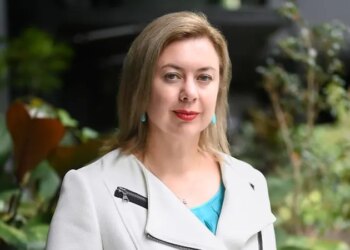In a recent update, SuperConcepts technical executive manager Graeme Colley said that many trustees and members of SMSFs are interested in the payment of death benefits if they or their spouse were to die. This usually revolves around who is eligible to receive the death benefits, the effectiveness of reversionary pensions, non-reversionary pensions, and the different types of death benefit nominations.
However, he noted that when questions are raised around what would happen “if we were to die at the same time”, the answer is much more complex as it depends on the situation.
As a general rule, where two or more persons die in circumstances where the order in which they died cannot be precisely determined, Mr Colley noted the deaths are considered to have occurred on the basis of seniority.
“That is, the elder is deemed to have died first, and the younger person is deemed to have survived the elder for these purposes,” he said.
“However, when it comes to superannuation, the payment of the deceased members’ benefits may be impacted by a number of factors.”
One factor is the impact of the fund’s trust deed. For example, a member may be in receipt of a pension and their spouse, who is younger, may be nominated to receive a reversionary pension.
“The member also has a binding death benefit nomination in place, which nominates children from another relationship to receive the benefit,” Mr Colley noted.
“In this situation, payment of the death benefit may be determined in accordance with the fund’s trust deed. In some deeds, the death benefit nomination may take precedence over the reversion of the pension.
“However, if it is silent on which takes precedence, the younger spouse would become entitled to the reversionary pension. Any other benefits of the member would then be distributed under the binding death benefit nomination.”
Another factor is the particular law of the state or territory in which the deceased person resided, rather than where they died. In most cases, if there is no certainty on the order of death, Mr Colley said the older is deemed to have died first and so on; however, this may be subject to the order of the court in relation to the division of property.
The wording of the BDBN
The wording of the directions given by the member for distribution of the death benefits may also be relevant. In the case of SMSFs and SAFs, the benefits of section 58 of the SIS Act should not be underestimated as it allows the trustee to be subject to direction “by another person”, usually a member, according to Mr Colley.
“It is this provision that allows the member to direct the trustee to pay death benefits in a much wider range of circumstances than larger funds. For example, it will allow the member to direct the trustee to pay the death benefit to a surviving spouse only if they survive for a period after the member’s death,” Mr Colley explained.
“The state and territory laws use 30 days as the period; however, with the direction to the fund trustee under section 58 of the SIS Act, any period could be used in relation to the survival of the spouse.
“The benefit of including a survivor provision in the binding death benefit nomination may resolve the issue, where the parties died simultaneously and the member’s wishes for the direction of the benefit would differ if their spouse had predeceased them.
“This may occur where a blended relationship is in existence and the member may wish their death benefits to be paid to their children or their estate rather than to their spouse’s children via the spouse’s estate.
“The member may also wish to put in place a cascading death benefit nomination, which would nominate the surviving spouse as the first death benefit beneficiary, but if the surviving spouse died within 30 days of the member’s death that their children or others become entitled to receive the death benefit.
In an example, Sue and Tran have an SMSF and have each made binding death benefit nominations which direct the trustee to pay any death benefits to the surviving spouse on their death.
However, if their spouse does not survive for longer than 30 days after their death, any benefits are to be paid to their children in equal proportions. This is called a cascading death benefit nomination and assists in the distribution of the death benefit if Sue and Tran die simultaneously.
“An alternative way of distributing Sue and Tran’s death benefit could be to have a binding death benefit nomination, which paid the death benefit to their estate by nominating their legal personal representative who would be legally required to distribute the benefit as directed in their wills,” Mr Colley continued.
“From a tax perspective, if the will nominated adult children as recipients of the death benefit, the tax would be payable on the taxable portion of the benefit at 15 per cent; however, no Medicare levy would be payable.
“For anyone reviewing their binding death benefit nominations, especially those with a blended relationship, it may also be worthwhile reviewing who is to receive death benefits from superannuation if both members of a couple were to die simultaneously.
“Most cases where the payment of superannuation benefits end up in a dispute involve inadequate instructions or no instructions being made by the deceased including the absence of an updated or current will.”


